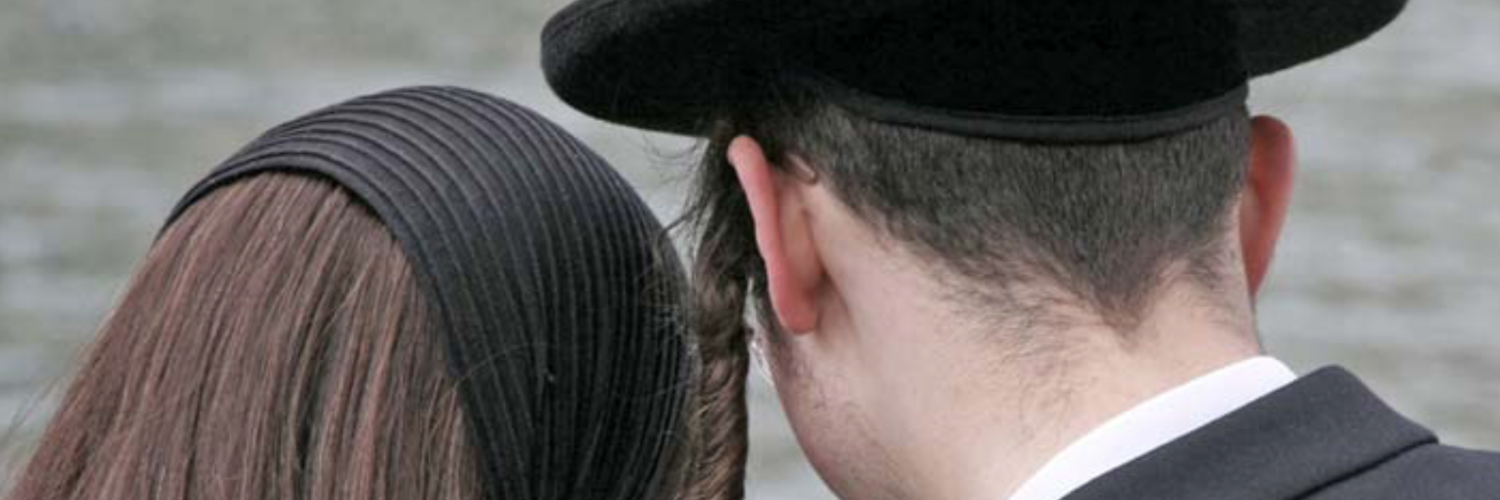
TV binge-watching has emerged as a primary coping strategy for — I’m estimating here — the gazillions of people tired of 2,000-piece puzzles and cleaning their homes, but who still find themselves indefinitely sequestered because of the coronavirus pandemic.
Dare I say, thank God for cable streaming?
I’d include in my moment of praise the new four-part Netflix series “Unorthodox,” the story of a young Jewish woman raised in the ultra-Orthodox, Hasidic Satmar community in Brooklyn’s Williamsburg neighborhood who runs away because, as she says, “there are too many rules.”
Click here to view the show’s official trailer. The dialogue is in Yiddish, German and English — a linguistic stew that my late in-laws also spoke, often in the same sentence. They also added some Hebrew and were particularly adept at mixing curse words. But I digress.
The show is based on the real-life story of Deborah Feldman. As with virtually all such shows, some details of Feldman’s best-selling (according to Amazon) memoir were changed or invented for dramatic impact.
Media depictions of insular religious communities — be they polygamist Mormons, as in HBO’s TV series “Big Love,” or the Amish in the Academy Award-winning Harrison Ford film “Witness” — require unusual sensitivity.

Journalism, regardless of the form taken (I’m including here cinematic documentaries), requires an equally deft hand. One reason is that the most insular religious groups are notoriously mistrustful of outsiders, making them difficult to penetrate. That in turn often leads to innocent misunderstandings that undercut credibility. (I’ll leave intentional distortions and sensationalism for another post.)
I’ll get back to the how-to issue below. But first let’s give “Unorthodox” a deeper look. This is a topic that could point to news stories linked to other tight-knit religious communities, here in America and around the world.
Each episode is about an hour in length. My wife and I watched the first three episodes back to back but saved the final episode for the next night (it was after 1 a.m. when we stopped the first night). Like many religiously liberal Jews we know, we were fascinated by the story — rooting, I confess, for Feldman’s character’s success at breaking away as her ultra-Orthodox family and community tries to keep her from leaving.
I know enough about the ultra-Orthodox world from my years covering it to spot some minor inconsistencies in the show’s portrayal. This writer, who also fled Satmar life, found what she considered to be gross inaccuracies.
You may be aware that ultra-Orthodox Jews — called Haredi (singular) and Haredim (plural) in Hebrew — account for an inordinate number of COVID-19 cases in the hard hit New York tri-state area.
(A quick dive into nomenclature: Haredim generally divide along a Hasidic-Litvak fault line. Here’s an explanation of Hasidic ultra-Orthodoxy. Here’s a link to an explanation of Litvak, or non-Hasidic, ultra-Orthodox Jews. Together, the two groupings, once fierce theological enemies, account for just 5% of the global Jewish population.)
This recent Times of Israel story sheds light on the New York metro area situation. The region is home to the United States’s largest ultra-Orthodox concentration. Note the story’s inclusion of rising anti-Semitism attributed to early-on ultra-Orthodox refusals to alter their intensely community-oriented lifestyle and adopt social distancing.
Similar situations have arisen in Canada, the United Kingdom and in Israel.
This scathing column by Nathan Slifkin, an Israeli moderate Orthodox rabbi, rips Israeli ultra-Orthodox religious leaders, some of whom initially told their followers to ignore social distancing orders.
Slifkin’s Rationalist Judaism newsletter regularly offers probing insight into ultra-Orthodox thinking and actions. I regularly follow his posts. In fact, I think that Israeli and diaspora Jewish commentators and news media do a far better job of explaining this inward-directed community’s workings than do even the most elite mainstream outlets.
If “Unorthodox” interests you, reading Slifkin will shed light on the degree of control that ultra-Orthodox communities can have over an individual’s thinking and actions.
Here’s a Haredi writer, an American, that I also follow regularly — Rabbi Avi Shafran, who is well known in Jewish media circles — for his insights into the ultra-Orthodox world. This piece of his is critical of how the general media, in particular, has revealed what he argues is its “bigotry” toward the ultra-Orthodox community in its coronavirus coverage.
Tight-knit religious groups that choose to live apart from conventional society hold a kind of National Geographic exoticness for outsiders. As such they make compelling material for storytellers of all stripes, religion journalists included.
Do any such groups — Jewish, Christian or otherwise — live in your area? If so, my religion-writer compatriots, how are they dealing with social distancing and the rest of the coronavirus crisis?
Do they trust what local authorities are telling them about limiting the coronavirus pandemic that’s circled the globe? Or have their strict theological boundaries and constrained life-style choices pushed them to mistrust virtually all secular authorities? That’s certainly the case with ultra-Orthodox Jews.
But keep in mind the difficulty of this kind of fact gathering. It’s tough.
It’s far easier, for what it’s worth, simply to sit back and watch the intriguing “Unorthodox.”











